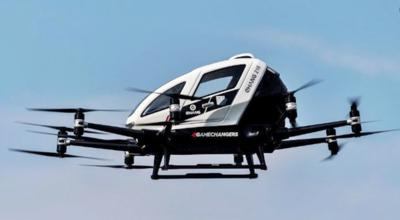Tue, Jan 31, 2023
Shifting Regulatory Landscape Expected as Industry Digests Rapid Advancement
Just before the end of 2022, the EASA published its rulemaking plans for Uncrewed Aircraft Systems and vertical take-off and landing aircraft (VTOL) use.

Worldwide legal operation Reed Smith has published a brief on the subject, pointing out some classifications and changes.
"EASA operational rules for UAS are separated into three categories based on factors including the level of risk posed by a proposed flight: low, medium, and high-risk," their initial brief states. "Currently, EASA has regulations for low and medium-risk UAS operations (“open” and “specific” categories, respectively). The document published by EASA in December 2022 provides clarification relating to high-risk UAS operations (“certified” category) and Urban Air Mobility (UAM), among other activities. EASA regulations for these more advanced operations are ongoing, in line with the regulatory development in many other countries like the U.S."
So what's on deck for the change? EASA plans to propose amendments to existing regulations to allow for what Reed refers to as "high-risk UAS and AAM operations." Those opinions have yet to be released by the EASA, but are expected to cover the expected run of uncrewed aircraft ops seeing advances lately. Operations like the uncrewed aerial carriage of cargo or takeoff and landing at aerodromes (soon to be vertiports) are the first that come to mind. Additional operations with single pilot operations, like sustainable air taxi flights, urban UAS operations, and such are also expected to be broken down in future publications.
Reed's summary advises clientele to watch out for an ever-shifting regulatory landscape as the legal ramifications of rapid change make their way through the system. "In its document, EASA notes the complexity of the regulatory architecture needed to permit high-risk UAS operations and UAM. EASA’s planned consultative process for the tasks above is iterative and may result in additional proposals to introduce or amend existing rules"
More News
From 2023 (YouTube Version): Legacy of a Titan Robert (Bob) Anderson Hoover was a fighter pilot, test pilot, flight instructor, and air show superstar. More so, Bob Hoover was an i>[...]
Get The Latest in Aviation News NOW on Instagram Are you on Instagram yet? It's been around for a few years, quietly picking up traction mostly thanks to everybody's new obsession >[...]
Aero Linx: B-52H Stratofortress The B-52H Stratofortress is a long-range, heavy bomber that can perform a variety of missions. The bomber is capable of flying at high subsonic spee>[...]
Altimeter Setting The barometric pressure reading used to adjust a pressure altimeter for variations in existing atmospheric pressure or to the standard altimeter setting (29.92).>[...]
"Knowing that we play an active part in bettering people's lives is extremely rewarding. My team and I are very thankful for the opportunity to be here and to help in any way we ca>[...]
 Classic Aero-TV: Remembering Bob Hoover
Classic Aero-TV: Remembering Bob Hoover ANN FAQ: Follow Us On Instagram!
ANN FAQ: Follow Us On Instagram! ANN's Daily Aero-Linx (05.15.24)
ANN's Daily Aero-Linx (05.15.24) ANN's Daily Aero-Term (05.15.24):Altimeter Setting
ANN's Daily Aero-Term (05.15.24):Altimeter Setting Aero-News: Quote of the Day (05.16.24)
Aero-News: Quote of the Day (05.16.24)



